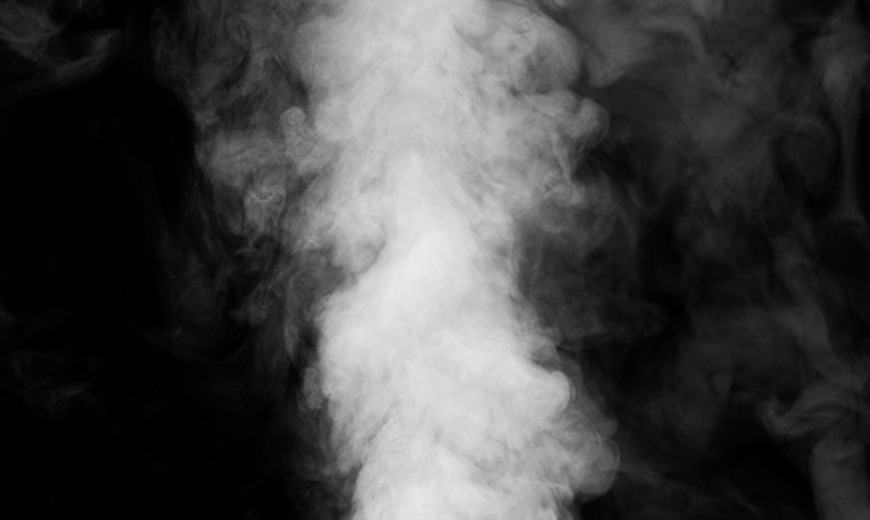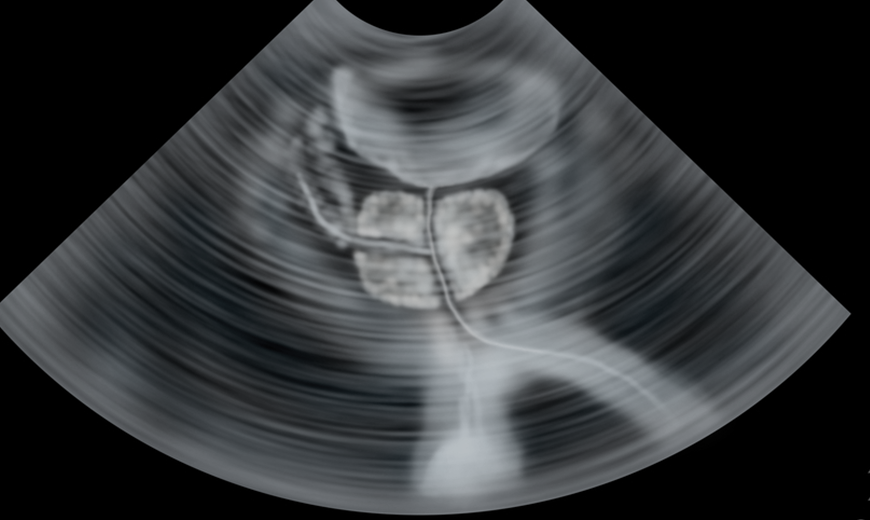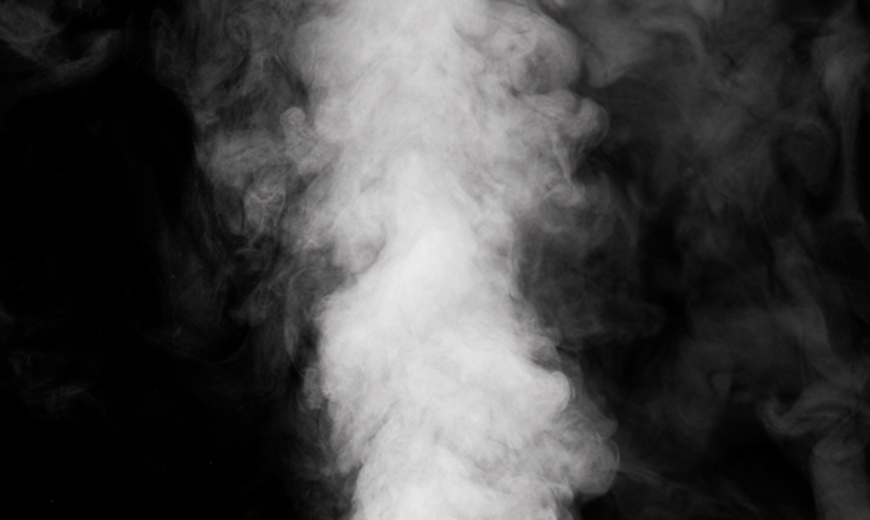
“An enlarged prostate gland is a fairly common condition in men over 50 years of age and a novel minimally invasive technique has shown exceptional results by reducing the size and reducing obstructive signs.”
Introduction to the REZUM System
Until just over five years ago, enlarged prostates used to undergo cumbersome, expensive and invasive surgical procedures in which patients had to receive general anesthesia, stay in the hospital for several days and run the risk of developing a side effect (such as erectile dysfunction, by destruction of the nerves that go to the penis).
However, in the United States, a minimally invasive technique began to be optimized, which basically consists of injecting water vapor into the hyperplastic prostate gland to produce redundant tissue death and absorption by the body itself, with minimal collateral effects and a low rate of more than acceptable success in most patients.
The FDA (Food and Drugs Administration) approved this treatment initiating a true revolution in Urology as it changed the way in which benign prostatic hyperplasia (BPH) was being treated. This technique is known as the REZUM ™ System.
The REZUM ™ system has many advantages, among which are its simplicity, low cost and the fact that the patient can return home after being operated without much care, in addition to its high level of safety and tolerability.
The REZUM ™ system is quite convenient for the patient since since it is performed in a doctor’s office, the implications of time, cost, and surgical risks are minimized. The patient can comfortably return home after receiving the procedure and continue the recovery there, which is usually quite fast, ensuring a prompt reactivation in work, sports, sexual and daily practices.
The high prevalence of benign prostate hyperplasia is well known in countries such as Spain where, according to estimates by the Spanish Association of Urology itself, about 80% of men over 50 years of age suffer from it, constituting a serious health problem in patients. mens.
Despite the fact that the REZUM ™ system has been shown to improve the quality of life of patients with an enlarged prostate in a safe and effective way, the number of clinics that offer this service is very small. The treatment is still new and represents a challenge to the health system.
However, within Spain, our clinic in Seville and the Canary Islands are one of the pioneers in promoting this treatment. Let’s see what this is all about.
Profits
A hyperplastic prostate can compress the urethra and make it difficult for urine to flow from the bladder and promote the development of malignant tumors. During the treatment with the REZUM ™ system, in less than 10 seconds, water vapor is released inside the gland, causing the tissue to retract and, as the body is responsible for eliminating it, the urethra opens again and urine flows No problem.
The REZUM ™ system has been subjected to scientific studies to determine, among other things, its safety and efficacy and, among the positive effects it produces in patients with benign prostatic hyperplasia, the most significant are:
Minimally invasive
Outpatient procedure
Given the intricate internal anatomy of the urinary tract in men, urologic procedures are often complicated and often involve hospitalization for several days (and even weeks in some cases).
The REZUM ™ system is as simple as an injection of some drug in the gluteal region, it requires a few minutes and a very low dose of local anesthetic. The risks of infection or bleeding are low and post-intervention care is simple (maintaining hygiene in the area and not exerting so much physical effort) so that the patient can receive the treatment and return home later.
It is not necessary for the patient to stay in the hospital, as with other surgeries (transurethral resection of the prostate, for example).
It should be noted that this treatment is completely painless. The patient does not usually feel anything thanks to the application of some anesthesia (although no scalpels are used or cuts are made). The procedure also does not leave any type of mark or scar.
Preserves sexual function
Extirpates themConventional surgical procedures of certain parts of the prostate often lead to destruction of nerves leading to the penis, resulting in decreased sensitivity and sexual satisfaction and erectile dysfunction (ED), and for this reason, many men with enlarged prostates prefer not to receive treatment (which is dangerous because the risk of cancer is greatly increased).
Since it is less radical, the REZUM ™ technique preserves the maximum erectile function of the penis by causing less trauma to the nerves that go to the member.
Less radical
Almost definitive
These studies have also been able to show that after prostate treatment with the REZUM ™ system, the possibility of re-presenting a significant hypertrophy of the gland is practically nil.
Even ten years after ablative convective steam treatment of the REZUM ™ System, it is highly unlikely that the remaining prostate tissue will show signs of hypertrophy or abnormal growth.
The retreatment rate for benign prostatic hyperplasia is significantly low, around 4.4% after five years of having applied the procedure with the REZUM ™ technique.
Safe and efficient procedure
Therapy with the REZUM ™ system does not produce undesirable side effects because the trauma to the tissues is minimal. The patient can feel security and confidence, in addition to a rapid improvement of the obstructive symptoms that develop from benign prostatic hyperplasia.
This improvement can be achieved very soon. Two weeks after the procedure, the patient is completely recovered and without sequelae or marks (this treatment does not leave scars), however, the maximum benefit is reached after three months.
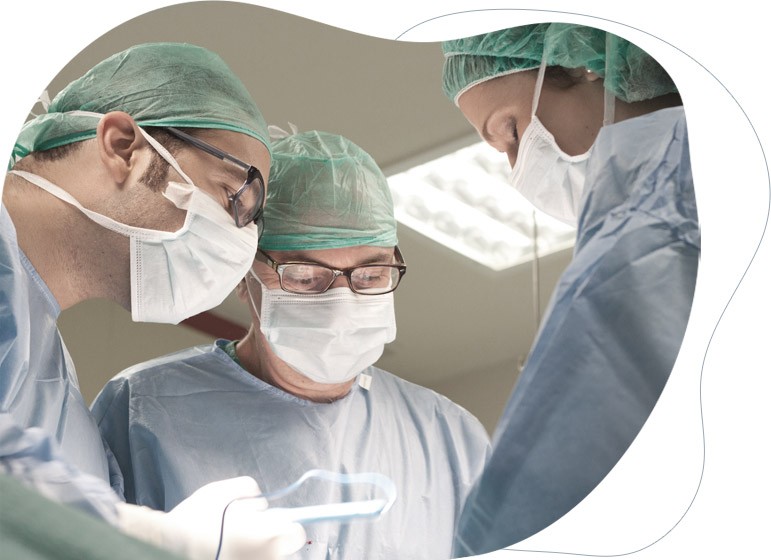
Painless procedure
This urological treatment is completely painless, only a little local anesthesia is applied to sleep the area and avoid any type of discomfort.
The REZUM ™ system does not require the patient to receive general anesthesia, so the patient does not need to be unconscious. This point is essential for the reassurance of patients who may feel concerned about conventional anesthesia (which is required in open prostate surgeries).
Speedy recovery
Patients undergoing BPH treatment with the innovative REZUM ™ technique can return to their daily activities in just a few days.
With minimal side effects, no incisions, and minor home care, patients do not need to be admitted to a hospital for several days as with other surgeries.
Wide scope of action
Improvement in urinary function
By reducing the volume of the prostate, the compression exerted by the gland on the external walls of the urethra also decreases, thus facilitating the passage of urine from the bladder (where it is stored after being produced in the kidneys) to the orifice. or external meatum of the penis, where it comes out.
This fact could notably improve urinary function, reducing the pressure inside the bladder (and even the kidneys) and reducing the effort that the man has to make to urinate.
Another advantage of the REZUM ™ system on urinary function is an improvement in dribbling that can be experienced after urinating as well as the feeling of not having completely emptied the bladder.
No more drugs
With the REZUM ™ technique the patient can stop worrying about taking medications for the prostate (alpha adrenergic receptor antagonist drugs such as tamsulosin) that often produce undesirable effects such as:
- Dizziness.
- Postural hypotension.
- Palpitations.
- Constipation or constipation.
- or Tiredness.
- Headaches.
- Syncope or fainting spells.
These medications can also cause sexual effects such as decreased libido, impotence or erectile dysfunction (ED), or problems ejaculating properly.
The improvement of obstructive symptoms of the lower urinary tract due to benign prostatic hyperplasia (BPH) with the REZUM ™ technique is completely natural and does not require expensive drug treatments.
Preservation of erectile function and ejaculation
The prostate is an organ that is closely related to the male reproductive system. A large number of nerve fibers carry and they bring impulses to and from the genitals, linking them with the central nervous system. From there come the responses to sexual stimuli such as penis erection, ejaculation and relaxation, in addition to the possibility of perceiving pleasant sensations.
With conventional surgeries to treat benign hyperplasia, some problems in general sexual function such as erectile dysfunction or retrograde ejaculation are usually present.
The latter is characterized by a late ejaculation in which practically no type of seminal secretion is emitted due to the fact that when the gland is extracted, the ducts in which the semen flows into the urethra at the level of the prostate are also extracted. Semen travels up the urethra (instead of down to the penis) and combines with urine from the bladder.
This can bring many problems, especially in men who still want to maintain their fertile capacity and have more children, even at advanced ages.
REZUM ™ Technique: What is the appliance like?
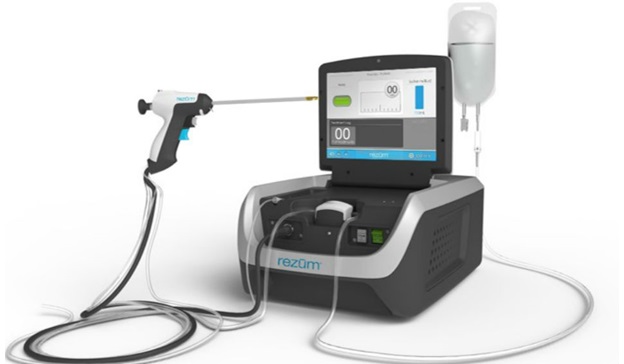
The REZUM ™ system consists of a hand-held device quite similar to a cystoscope (the one used to evaluate and diagnose diseases in the bladder) that is connected to a central steam generator that has the capacity to heat pure water to more than 103 ° C, causing it to expand about 1,700 times.
This vapor is emitted and concentrated in a very precise way with a cannula that has a tip similar to a needle with multiple holes at its end. These allow the vapor to disperse throughout the prostate tissues evenly and stimulate cell death in troublesome nodules.
The application of thermal energy by convection is very fast (it occurs in fractions of a second) but it has the ability to be self-limiting, that is, it stops by itself in a very specific area.
The fact that the REZUM ™ system is self-limited provides assurance to the urologist and the patient that the reduction in prostate volume will be specific in terms of quantity and location, without the risk of damaging other structures or healthy tissue.
Procedure
Before the intervention
Treatment with the REZUM ™ system consists of a series of prior medical consultations to evaluate benign prostatic hyperplasia, understand its morphology and size, in addition to performing medical examinations to complement the clinical data.
On average, there are two medical consultations before the intervention. There, the urologist or urological surgeon who specializes in handling the equipment performs a physical examination accompanied by an anamnesis. There begins the medical history.
Blood and urine tests may be indicated to measure the body’s chemistry and anticipate health situations that could make the intervention more complex (such as diabetes, for example).
On the day of the intervention, the patient must be accompanied to the hospital (or clinic) because the effects of anesthesia could last a few hours later.
In addition, it is recommended that the patient go to the intervention having had adequate hygiene of the genital area, if possible, having shaved the pubic hair.
How is the anesthesia of the procedure?
Conscious sedation is used, which means that the patient can be awake throughout the procedure without feeling any pain.
Conscious sedation consists of administering local anesthesia to avoid pain in the genital and urethral area and, in addition, the patient receives a nerve sedative that calms him down. Some patients can fall asleep but most remain awake for the duration of the intervention, which is also very short.
The step-by-step procedure
Once the patient is admitted to the intervention area (generally a doctor’s office set up for this purpose or a simple operating room), the interventional doctor administers a nerve sedative plus some local anesthesia.
This ensures that the procedure does not cause any discomfort to the patient.
The next steps are:
- 1. The doctor performs the disinfection of the area (the glans penis).
- 2. Insert the tip of the appliance through the urethra, lubricants can be used to improve the gliding of the surfaces.
- 3. Using a high resolution video camera, the doctor can insert the instrument to the exact location of the prostate, just before entering the urinary bladder.
- 4. At this point (in the prostatic section of the urethra), the doctor activates the emission of convective water vapor energy in the transition zone of the gland (where hyperplasia usually occurs).
- 5. For a few seconds, the emission of water vapor is maintained and the device is withdrawn from the urethra. The medical intervention is terminated.
- 6. The doctor may order a urinary catheter for four to five days after the intervention. Some normal inflammation may occur and slow or stop the passage of urine.
What is the fundament ment of this treatment? How does it work?
The heat and pressure energy that is emitted helps to produce a controlled destruction of hypertrophic tissue after a few days. The body easily reabsorbs this tissue and the gland decreases in size.
The REZUM ™ system is powered by convection water vapor energy, and in this way it is administering controlled and fairly precise doses of energy in the form of heat directly in the region of the gland where the hyperplastic processes of the cells are developing. disorderly, obstructing the lower urinary tract.
Each emission of heat energy contained in water vapor with the REZUM ™ technique lasts about 9 seconds (something amazingly fast) and uses a very small amount of water (0.42 ml approx.) That diffuses evenly between the gap. of the glandular tissue.
What does water vapor do in hyperplastic prostate tissue?
The water vapor that is emitted with the REZUM ™ technique releases heat energy that denatures (or breaks) cell membranes and pathological cells die. These cells that died are naturally phagocytosed by macrophages without causing further inflammation or infection.
In addition, the controlled release of thermal energy within the prostate induces a decrease in blood flow by closing the microvasculature (which slows the development of prostatic hyperplasia) and the degeneration of alpha adrenergic nerves, which stimulate the growth of the gland.
To summarize, it is possible to say that the REZUM ™ technique reduces obstructive signs of the lower urinary tract by several mechanisms, which are:
- Destroys the hyperplastic portion of the prostate.
- Reduces the supply of nutrients to regions susceptible to uncontrolled growth.
- Eliminates the nervous stimuli that induce benign prostatic hyperplasia.
What results can I expect?
The treatment has been shown to produce beneficial effects (reduction of one third of the prostate volume) after two weeks of having been applied.
Other studies show a 91.5% improvement in the third month after treatment and a 95.1% improvement after six months.
This proves the high success rate at a very positive cost-benefit ratio for the patient with benign prostatic hyperplasia.
Therapy with the REZUM ™ system shows positive results in the reduction of the size of the prostate and of the obstructions of the lower urinary tract (LUT) in a remarkable and sustained way even five years after the procedure, which is also performed only once. It is not necessary to repeat the treatment as it happens with other therapeutic options.
The quality of life of patients with a history of benign prostatic hyperplasia (BPH) increases significantly and even sexual satisfaction, something so important in the well-being of patients.
Brief anatomy and function of the prostate
The prostate is a male gland the size of a medium walnut that is located below the urinary bladder, and around the first portion of the urethra, the tube through which urine descends from the reservoir (the bladder) to the penis.
Its particular anatomical disposition makes the urinary function of the male especially susceptible to inflammatory processes of the prostate, both acute (such as prostatitis) and chronic (such as malignant tumors or benign hyperplasia).
The functions of the prostate are as follows:
- Secretion of part of the seminal content: the prostate produces nutritional and protective substances that allow the survival of sperm after being ejaculated into the vaginal canal.
- Semen pumping: the prostate acts as a kind of hydraulic pump that helps expel semen during ejaculation along with other muscles.
- Function of "one-way valve" of semen that prevents it from being released into the urinary bladder during ejaculation (this pathology is known as retrograde ejaculation and can be the cause of male infertility).
The cells that make up the prostate are especially sensitive to hormonal stimuli, mainly testosterone, with which their functions are favored in a normal way and of which, the prostatic secretion of semen is the most important.
However, after the fourth or fifth decade of life, the production of testosterone in the Leydig cells in the testes declines and the gland is sensitized to the little circulating hormone synthesizing more receptors, which significantly increases the size of the cells and the glandular volume. This is known as benign prostatic hyperplasia.
What is benign prostatic hyperplasia?
Or HBP (as it is also known), the Benign hyperplasia is a male pathology with a very high prevalence in more than 40% of men over 50 years of age, which is why aging is the main risk factor.
This condition is characterized by an abnormal growth not associated with cancer in the glandular portion of the prostate (where semen is produced) that produces, as the main symptom, obstruction of the flow of urine manifested in:
- Difficulty starting urination.
- Weak urine stream.
- Painful urination.
- Constant feeling of wanting to urinate.
- Feeling of not having urinated completely.
- Frequent nocturnal urination (nocturia).
- Urinary incontinence when the bladder can no longer support it.
- Complete urinary retention in the most serious cases: a urological emergency that must be attended immediately to avoid irreversible kidney damage.
The diagnosis of BPH is based on a complete medical history, the patient’s history, digital rectal examination, and the symptoms reported by the patient (especially urinary ones). Your doctor may order a cystoscopy, rectal ultrasound, or urodynamic studies (such as MRI with contrast) to identify the exact location and degree of obstruction.
The treatment of BPH consists of the administration of 5 alpha reductase inhibitor drugs (such as finasteride), alpha adrenergic blockers (such as tamsulosin) and surgery, the only definitive option and within which, the REZUM ™ technique has shown excellent results with minimal risks.
Frequently Asked Questions About Dr. Shaeer's Cavernous Rotation Technique
Las únicas contraindicaciones para recibir este tipo de tratamiento son los casos en los que el tamaño de la próstata exceda los 100 gramos de masa total (para lo cual se requeriría una intervención quirúrgica abierta) o pacientes que estén consumiendo fármacos anticoagulantes debido a que aumentan el riesgo de hemorragias.
Sí, es necesario dejar de tomar fármacos de este tipo (como la warfarina o la aspirina) dado el riesgo de hemorragias y sangrados durante o después del procedimiento médico.
El tiempo requerido de abstinencia de estos fármacos es de 10 días previos y 10 días después del procedimiento con el sistema REZUM™. Este es un protocolo estándar no solo para este tratamiento urológico sino para la mayoría de procedimientos mínimamente invasivos.
Los restos celulares que no son digeridos son drenados de manera lenta pero segura hasta la circulación sistémica por lo que el sitio de la “lesión” se retrae desde afuera hasta adentro.
El sistema REZUM™ es asombrosamente rápido y suele durar entre tres y siete minutos.
Es completamente normal que cerca del 20 % de los pacientes sometidos al tratamiento de HBP con el sistema REZUM™ manifiesten molestias al orinar (disuria), así como que el 11 % lleguen a percibir algunas trazas de sangre en la orina (hematuria).
Estos signos suelen ser leves, transitorios y durar pocos días.
No, en lo absoluto.
De hecho, muchos pacientes que venían de tratamientos con fármacos para evitar la hiperplasia de próstata (como la tamsulonsina) dejan de tomarlos posterior al tratamiento con el sistema sistema REZUM™
Medical references and bibliography
- Rezum: a new transurethral water vapor therapy for benign prostatic hyperplasia U.S. National Library of Medicine
- Rezūm® System for Benign Prostate Hyperplasia The London Clinic
- What is the Rezum system for the treatment of benign prostatic hyperplasia (BPH)? Medscape
BLOG ANDROMEDI
Other articles that may interest you
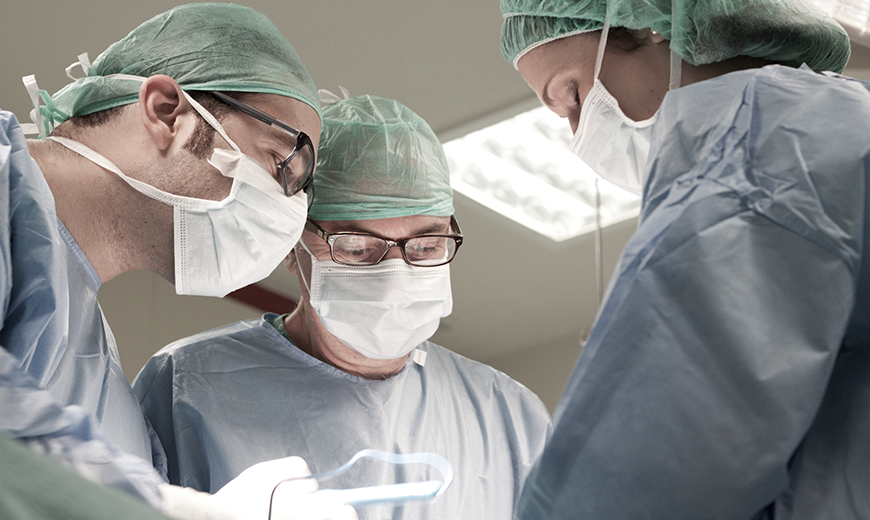
Laparoscopic surgery for prostate
26 September 2023
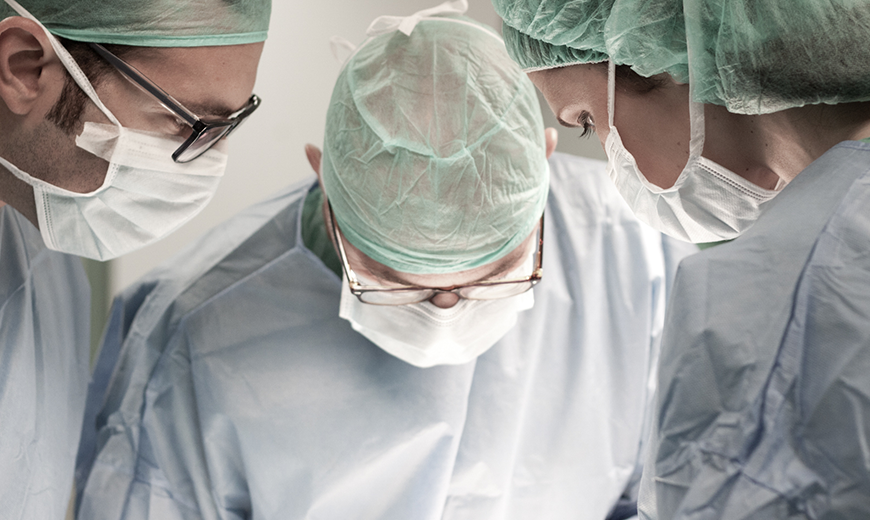
Laser prostate surgery
22 November 2021

Impotence, incontinence and other problems after prostate surgery
22 November 2021
Author
El Dr. Juan Manuel Poyato, con más de 15 años de experiencia médica, es especialista en Urología, Medicina Sexual y Andrología, Es Profesor Externo del Departamento de Fisiología Médica y Biofísica de la Universidad de Sevilla y Coordinador de Urología de la Agencia Sanitaria Bajo Guadalquivir de la Consejería de Salud (Junta de Andalucía).
